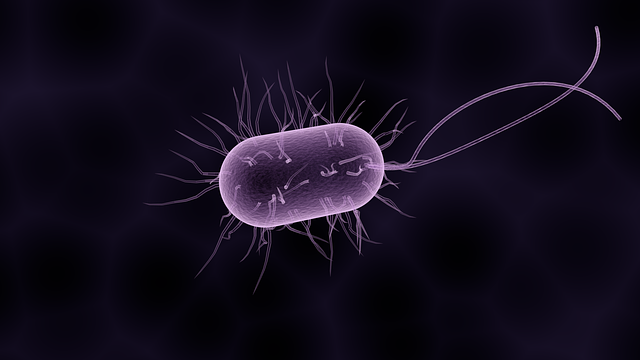
What Types of Bacteria Are Pathogenic?
There are many different types of bacteria and ways to classify them into groups. Not all bacteria are bad, like you may have previously guessed. Did you know that your body is loaded with hundreds and thousands of bacteria that serve to colonize your body in order to prevent overgrowth of pathogenic elements?
 You can classify bacteria with a process called gram staining. Danish scientist Hans Christian Gram devised a method to differentiate the two types of bacteria based on the structural differences in their cell walls with a dye test. In his test, bacteria that retain the crystal violet dye do so because of a thick layer of peptidoglycan and are called Gram-positive bacteria. In contrast, Gram-negative bacteria do not retain the violet dye and are colored red or pink. (source: https://www.diffen.com)
You can classify bacteria with a process called gram staining. Danish scientist Hans Christian Gram devised a method to differentiate the two types of bacteria based on the structural differences in their cell walls with a dye test. In his test, bacteria that retain the crystal violet dye do so because of a thick layer of peptidoglycan and are called Gram-positive bacteria. In contrast, Gram-negative bacteria do not retain the violet dye and are colored red or pink. (source: https://www.diffen.com)
“A lot of Gram-negative bacteria, they come out of the box, if you will, resistant to a number of important antibiotics that we might use to treat them. We’re talking about agents with names like Acinetobacter, Pseudomonas, E. coli. These are bacteria that have historically done a very good job of very quickly developing resistance to antibiotics. They have a lot of tricks up their sleeves for developing resistance to antibiotics, so they’re a group of agents that can quickly become resistant, can pose major challenges to resistance. And what we’ve seen over the past decade is these Gram-negative agents becoming very rapidly more and more resistant to all of the agents that we have available to treat them.” – Dr. Arjun Srinivasan is an associate director at the Centers for Disease Control and Prevention
Here are 5 Types of Harmful Bacteria:
- Streptococcus Pyogenes – this is the causing agent of a mild sore throat and skin infections that may worsen in certain situations to lead to life-threatening infections like toxic shock syndrome and septicemia. This is a gram positive bacteria
- Escherichia Coli – E- Coli is a gram-negative bacillus. It can cause traveler’s diarrhea and some pathogenic strains can also lead to bloody diarrhea and circulatory shock.
- Vibrio Cholerae – cholera and is associated with intake of improperly cooked food or poor sanitary conditions that are most often found in under-developed countries. Vibrio Cholerae is linked to hundreds and thousands of deaths worldwide.
- Enteritis Salmonella – This is the most common cause of food poisoning throughout the world. It can lead to serious and life-threatening food poisoning, diarrhea, circulatory shock and dehydration in children.
- Salmonella Typhi – This is a gram-negative organism that is the causative agent of typhoid fever. It is associated with a high mortality rate after initial infection and characterized by blood diarrhea, vomiting, dehydration, fever and may lead to death if proper treatment is not instituted at the right time.
5 Types of Bacteria According to Gram Staining:
- Coccus – These are rounded or spherical in shape and may occur in chains or clusters. These occurs abundantly in the environment and also as a normal commensal on the human body (in nostrils, skin, oral cavity and genitals). If these pathogens grow excessively, diseases like impetigo, food poisoning, and tonsillitis may occur
- Bacillus – Bacilli are rod-shaped and may be gram positive or negative on staining. Most popular species are salmonella (the causative agent of typhoid) and E- Col (causative agent for hemorrhagic diarrhea). Gram-negative, as well as gram-positive bacilli are well known causative agents for gastroenterological, pulmonary and cutaneous infections.
- Rickettsia – Rickettsia is considered unique bacteria since it is incapable of surviving outside living organisms. Due to unstable morphological features, it is transmitted by different vector sources like ticks, fleas, and mites to cause life-threatening infectious diseases like Rocky mountain spotted fever and typhus.
- Mycoplasma – All bacteria are characterized by a cell wall outside cell membrane; however, mycoplasma is unique as it lacks a cell wall that is also considered a protective mechanism that makes it easier for bacteria to evade antibiotic therapies. It is a causative agent for life-threatening pulmonary infections and some strains may cause pelvic disease.
- Spirillum – Spirillum is different from other bacterial agents as it is cork-screw shaped. It includes a causative agent of Lyme’s disease (transmitted by tick bites) and syphilis.
What can you do to prevent the bacteria that contain pathogens from entering into your body and getting you sick? Staying vigilant by making sure your food is cooked completely when you eat at home or in a restaurant. When traveling abroad drink bottled water instead of tap. Practicing good hand hygiene is always important as well.
Source: https://www.newhealthguide.org/Types-Of-Bacteria.html
